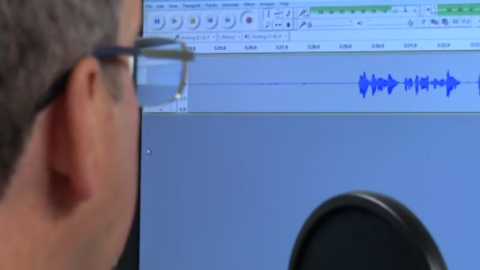
LONDON, United Kingdom (Reuters) — Knowing exactly when your fatigue reaches a level that could affect your driving ability isn’t always easy to judge, with long-haul truck drivers most at risk of falling asleep behind the wheel. But speech scientists are working on a method to detect the subtle changes in a person’s voice that could indicate that it’s time to take a break.
Audio recordings of a person’s voice are fed into an algorithm that extracts information to track changes over time. The idea is to create a baseline for each individual whereby their fatigue can be judged.
“We’re trying to build a model of a person’s voice by making multiple recordings over a period of time. We can see these very subtle changes that occur even within a day, even within one shift of work, you can see changes to the characteristics of the voice,” said Mark Huckvale, professor of speech science at University College London (UCL).
Previous speech analysis focused on single characteristics like pitch height and range, he added.
“We’re using a larger constellation of features which involve many different aspects of both pitch and voice quality, and prosody, and speaking rate, and pausing; and many more things. And this gives us increased sensitivity in looking at the way in which the voice changes through the day and with time.”
Initial sleep-deprivation experiments explored how fatigue levels change with lack of sleep. Participants read a set piece of text at regular intervals while staying awake for 60 hours. Researchers wanted to predict how long the participants had been awake using the acoustic features of their voices.
Research published in 2015 in the journal Frontiers in Bioengineering and Biotechnology said they could predict whether someone had slept within the last 24 hours with an accuracy of 90 percent simply from the changed character of their voice.
Moving from the controlled environment of the lab into the real-world was the next step.
Mining is one industry where driver fatigue can be particularly dangerous for drivers operating heavy vehicles. Working with WOMBATT, a fatigue management service, the team from UCL has conducted a pilot study of their iVOICE speech analyzer involving a driver of a large mining vehicle on a site in Peru. The driver provided spoken reports recorded throughout his shift every two hours over a period of five days.
Variable noise conditions in the conditions in the vehicle cabin presented new challenges in analysing speech recordings, but the effect of fatigue on the driver’s voice could still be detected.
“Fatigue is responsible for around 65 percent of all accidents in the mine. Current fatigue detection technologies are not very accurate and often highly intrusive, so unpopular with drivers. iVOICE is both accurate and fully unobtrusive,” Professor Jean Verhardt from WOMBATT told Reuters by email.
Eventually researchers foresee an in-cabin system processing voice recording and communications to a fatigue monitoring center.
“The goal is not to stop the driver doing their work or to prosecute them or to stop the truck driving; it’s simply to protect both the health of the driver and the safety of the vehicle,” said Huckvale. The technology, he added, could one day be integrated into a wide variety of health monitoring systems, such as monitoring the mental well-being of elderly people living alone.
A new study is currently underway using WOMBATT’s call-center staff to explore how the level of fatigue in the voice is affected by changing shift patterns. Huckvale added that project is at an advanced stage and he hopes it will lead to a commercial fatigue management service based on voice analysis in the next few years.
Britain’s Department for Transport says research suggests that almost 20 percent of accidents on major roads are sleep-related, with about 40 percent of sleep-related accidents involving commercial vehicles.







